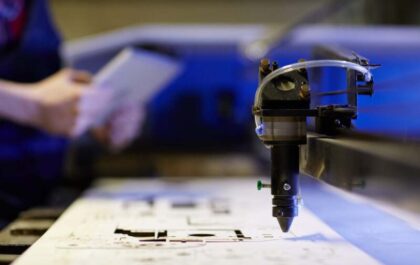Table of Contents
Introduction
The robot is superior to humans in its ability to hear and see. They see a broader spectrum of wavelengths and hear a more excellent range of sound frequencies, in addition to being able to feel touch, and their sensitivity is not much different from that of humans.
But robots are far from human abilities in terms of taste. Although the sense of taste is essential for both adult humans and newborns, it’s pretty different with robots, as taste technology is still lagging behind the complex potential of the human tongue.
The connoisseur robot performs its work on a plate of eggs and tomatoes. Robot makers and food scientists are trying together to develop this technology, and one of the proposed ideas is to make a tasting arm that the robot can move freely. Researchers from the University of Cambridge applied that idea and created this robot, testing its ability to taste several dishes containing eggs. The research was published in the journal.
Frontiers in Robotics and AI
This robot was not the first of its kind at the University of Cambridge. It was made by a robot capable of making fried eggs, as well as its ability to improve the production process by receiving customer impressions. However, the robot currently works like many other restaurant robots, especially in repetitive routine tasks.
On the other hand, some MIT engineers founded the Spyce restaurant in Boston, where customers can watch the machines prepare food to order. Initially, his owners had dreams of success and expansion and then the opening of a chain of restaurants along the east coast of the United States. However, the reception of different customers eventually led to the restaurant’s closure earlier this year.
Some basic cooking tasks can become a challenging obstacle for robots. In Britain, for example, a startup sells a set of robotic cooking arms capable of preparing thousands of recipes for $300,000, provided that a human assistant chops vegetables for them.
Electronic Tongue of Robot
But this problem has a solution because tasting is a chemical process. Flavours are only the translation of your brain to the molecules that touch your tongue. For example, acids taste pungent, while alkalis taste bitter. Some amino acids give a delicious taste, while salts taste, of course, salty. The feeling of spicy foods, such as peppers, is due to one of the chemical compounds (capsaicin).
Researchers have tried to make an electronic tongue for years, meaning a device mimicking the natural tongue by sensing molecules. Some of these attempts even took the form of the natural tongue itself and were used to taste orange juice.
Electronic tongues are a poor imitation of the natural tongue. The material must be mixed with water first—even if it is semi-solid like honey—for this device to taste it, and the water should be completely pure and free of any unwanted particles.
An electronic tongue can taste cheese or a cooked chicken meal, but someone must dissolve the sample food in water in advance for the robot. But, of course, we don’t think we’ll find a real chef who can wait 10 minutes to get the taste result!
However, this tasting result expresses the state of the sample only at a particular moment, which is not suitable for judging the quality of the taste. Furthermore, every food lover knows that tasting is much more complex than taking a chemical sample from liquid food.
The taste changes with each bite, and the different spices give multiple tastes in each piece so that the taste of one bite changes with chewing, while saliva and digestive enzymes mix with eating inside the mouth.
The Team Aspires to Work on Solving this Particular Problem – Robot
The Cambridge team aspires to work on solving this specific problem. They concluded by inventing a movable arm for tasting instead of making a device that mimicked the tongue. The researchers want to enable the robot to take multiple dish samples as it prepares and make what they call a “bait map.”
The researchers made nine samples of simple egg dishes with varying salt and tomatoes. The robot was able to make a scheme of the degree of salinity of each dish. The researchers then placed each dish in a blender to test the robot’s ability to identify differences between each dish after the sample became ground in a way that resembled food chewed inside the mouth.
Finally, the researchers made a map of salinity with high resolution that surpassed all previous electronic tongues. Of course, salinity is only one face of food. Researchers hope to develop the device to taste the sweet taste or amount of oil in the future. In any case, chewing food in the mouth is unlike grinding it in a blender.
“We may see an auxiliary robot shortly in the kitchen, but we still need a lot of progress like this to develop a robot that can taste, chop and cook food and learn recipes like any real chef.
Learning to cook is probably much more accessible than engineers seeking to make a robotic chef who can work in homes and restaurants!
Related posts
Featured Posts
Exploring Advanced Techniques in the Laser Engraving Machine: 3D, Texturing, and Multi-Layered Designs
Many industries have spoken for the laser engraving machine because of its results and versatility. But recently, many advancements have…
Benefits of Vitamin D
Introduction One cannot live without the benefits of vitamin D because its virtues are essential for good health. But do…


